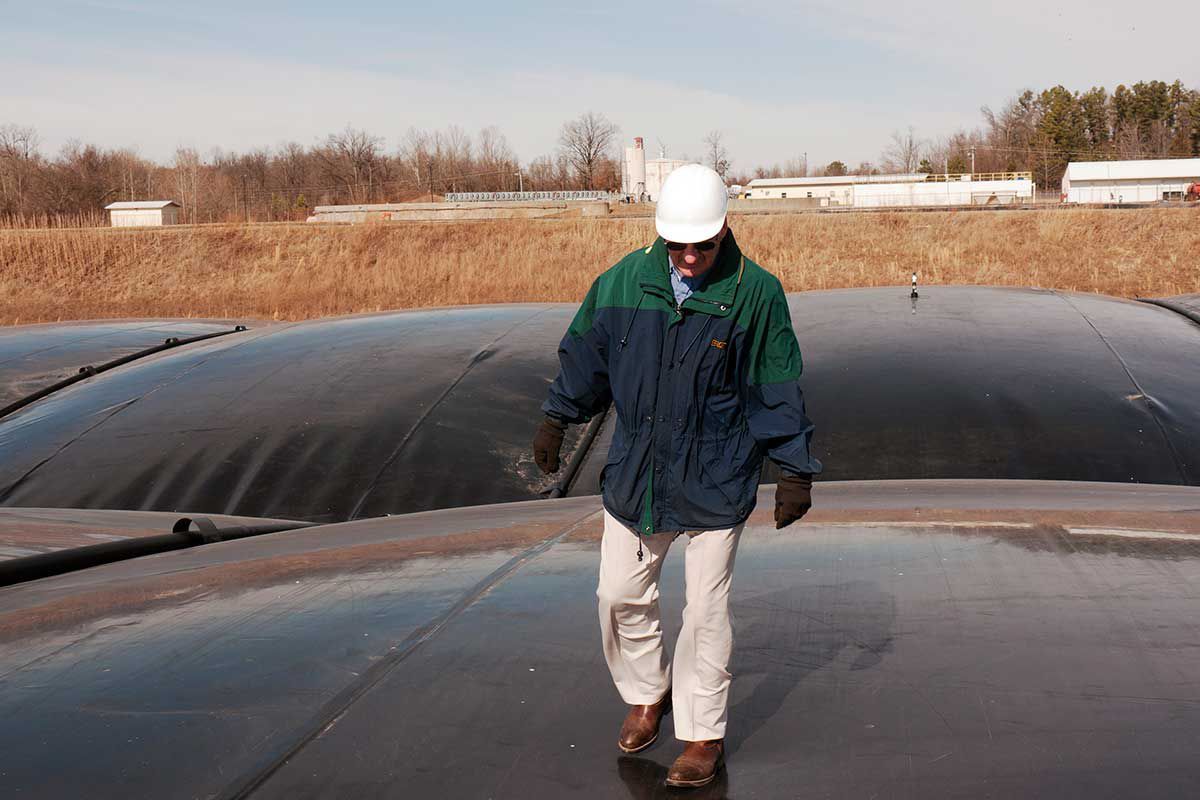Untapped energy recovered from waste

Combined heat and power (CHP) approach can bring huge energy savings from industrial and commercial waste products
What if you could make electricity using something you were going to throw away? What if you could capture the unwanted heat from some activity and use it for a good purpose? What if you could help the environment and the power grid at the same time?
These aren’t make-believe questions—in the real world a handful of Kentucky businesses have already found ways to do these things to make significant strides toward better energy efficiency.
Known as combined heat and power (CHP), this energy concept can be applied in many different situations. Finding new places to use CHP has great potential to significantly improve the state’s energy landscape and lower greenhouse gas emissions.
That’s why the Kentucky Energy and Environment Cabinet is working hard to spread the word about the value of customized CHP technology. This month, we’ll take a quick tour of some CHP operations and take a look at the latest efforts to find fresh possibilities.
How does CHP work?
Combined heat and power is not based on a single technology or fuel. Heat that is normally wasted is recovered as useful energy. Some of the features of CHP:
• Located in or near the point of use, which could be a farm, a factory, or any other kind of business;
• Generates electricity and/or
mechanical power;
• Recovers waste heat from other processes, which can then be used in other industrial processes, or to provide climate control, or to heat water.
In Beaver Dam, at the Young Manufacturing Company, 160 employees make stair treads and other wood products. The leftover sawdust and other wood waste are used as the fuel for boilers that produce high-pressure steam to run turbines. They generate about 40 percent of the electricity used in the manufacturing plant. But that’s not all—the hot exhaust air from the generators is used in the drying kilns for the raw lumber and to keep the buildings warm.
In Campbellsville, Cox Interior Inc., served by Taylor County RECC, is another home interior and exterior wood products manufacturer that operates a similar CHP system. Two boilers, fueled by wood waste, provide steam, heat, and electricity for the company’s more than 20 acres of manufacturing facilities under roof, which employs more than 400 people. The CHP system at Cox Interior is capable of producing about 75 percent of the electricity needed by the millwork operations when the factory is running.
Then, during evenings and weekends when the workers are gone, the CHP system continues to produce electricity that it feeds into the power grid through an arrangement with East Kentucky Power Cooperative, Winchester, which generates and transmits electricity for 16 electric
cooperatives serving more than half a million people in 87 Kentucky counties.
At Perdue Farms’ chicken processing facility in Cromwell, which employs 1,200 people, the CHP system is based on animal waste. The company enclosed an existing 15-million-gallon wastewater holding pond with a flexible cover. Tiny organisms that feed on the chicken processing waste in the covered pond produce methane gas, which is captured, compressed, and sent to a generator that uses the biogas to produce electricity. This system also provides about 20 percent of the facility’s hot water needs. While devising this CHP system, Perdue worked with local utility Warren Rural Electric Cooperative, Bowling Green, to become a partner in the Tennessee Valley Authority’s Green Energy Switch Program.
Technical advice and opportunities
Lee Colten, assistant director for the Division of Energy Efficiency and Conservation in Kentucky’s Energy and Environment Cabinet, says, “A lot of businesses don’t know that they can manage their energy costs with technologies such as combined heat and power systems, so we’re trying to help people understand their options. We have a program that provides free technical screenings to industries and commercial businesses who are curious about these approaches.”
Colten says, “We offer a broad range of information and services because of our partnership with the United States Department of Energy, the Kentucky Pollution Prevention Center, the Kentucky Association of Manufacturers (KAM), and the Southeast Combined Heat and Power Technical Assistance Partnership. We’re available to have discussions with anyone who wants to learn about opportunities for implementing CHP projects. There are a number of very qualified Kentucky private firms who can offer these services as well.”
At the basic level, finding out if CHP is a workable option is a cost- versus-benefits analysis, which can begin with a phone call from a manufacturer or other business. “The first part of our service is just a conversation,” Colten says, “then we move on to technical screening with data collection to get some facts. If there’s real potential, then we have partners who can come out to the site to do a more in-depth feasibility study and help guide anyone through the process.”
One of the barriers to implementing a combined heat and power system is the initial cost. In 2015, the Kentucky General Assembly approved a program called energy project assessment districts (EPAD) to help communities set up financing for a range of energy-efficiency projects, including CHP. Industrial revenue bonds may also be used to encourage these energy-efficiency technologies.
3 combined heat and power advantagesWhether you’re looking at a whole-house energy management device, a remote-control timer for your porch light, or any other gadget connected to the Internet, be sure to check out these features before you purchase:
• Greater energy efficiency, cost savings
• Fewer greenhouse gas emissions
• Reliable backup power during emergencies
For more information about combined heat and power opportunities, visit www.energy.Ky.gov and search “combined heat and power” for the link.
Nancy Grant from April 2016 Issue

